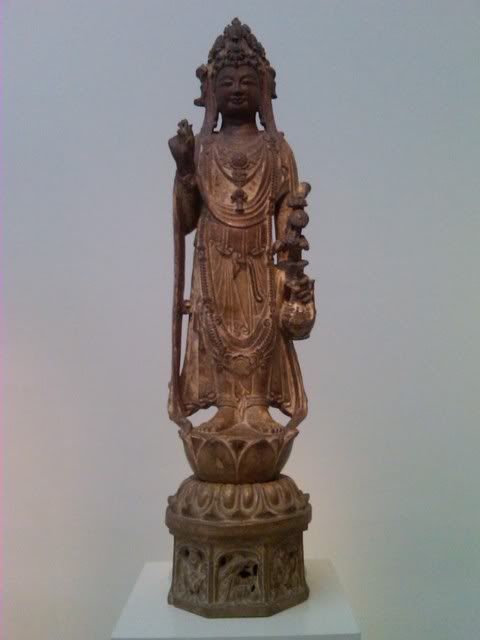I have been to the Met a few times before this assignment but I mostly saw the Greek and Roman sculptures and some of the Italian renaissance paintings. This time however, I planned on venturing off into a different wing of the museum, the Asian wing.
Right away after stepping foot into the wing you could feel a different presence. The corridor was lit by bright natural lighting and was full of statues and sculptures. Most of these sculptures were of the bodhisattvas who were the enlighten men of the Buddhist philosophy. These were meant to be displayed around varies areas. Some were meant for public display while others were more inaccessible in remote caves meant for monks.
This statue is of one of the most widely known bodhisattvas, Avalokiteshvara, carved out of limestone from the 7th century. The name translates to “Lord who looks down” or observes the world. He is considered to have all the passion of the other entire bodhisattvas combined. Often he is depicted to have many arms from one Buddhist story of never vowing to rest until everyone has been saved from samsara, or daily suffering.
This is a head of bodhisattvas from the Shan Xi providence of China. It was part of a much bigger sculpture carved out of wall that was part of a cave. Before visiting the museum I never really understood why Buddhist statues were in various positions or were holding a lotus but after looking at these statues and reading more about the philosophy I am beginning to understand the strong, religious meanings behind them.


No comments:
Post a Comment